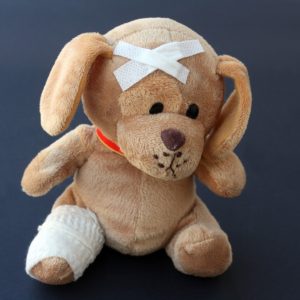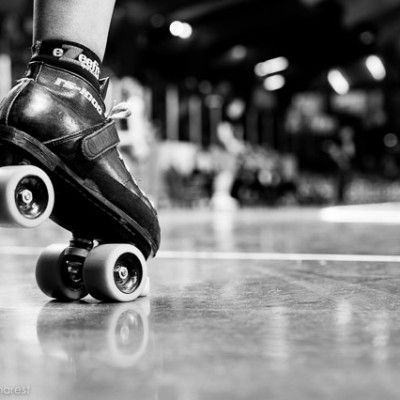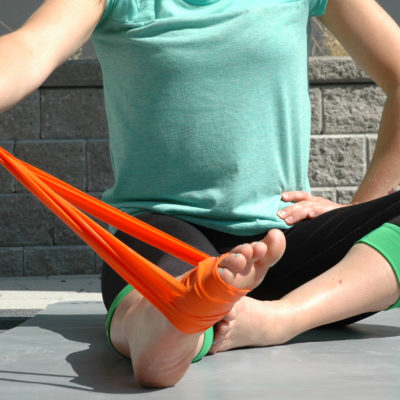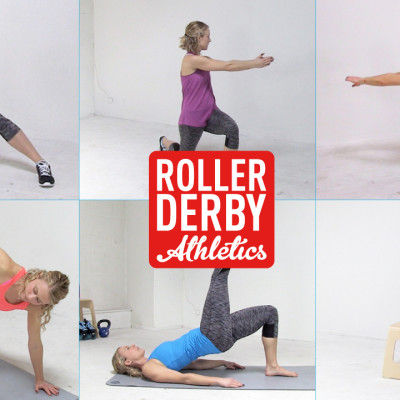
Derby injuries happen to all of us. And we totally adapt our training to deal with whatever our current physical status is. Booty has some awesome information about training while you’re in recovery that I highly recommend you check out. But what about the way we eat? Should injuries impact our food choices?
ABSOLUTELY!
And I don’t mean reaching for the cookies because you got hurt, I mean eating in a way that supports faster healing and improved recovery.
Just like we have peaks and de-loads in our training cycles, we have stages in our nutritional intake – you wouldn’t eat the same way during off-season as you do during on-season. You can look at eating for injuries as another layer in that cycle.
To start off, let’s go through what happens to the body when it gets injured:
First stage: Inflammation
This is the red, puffy, inflamed stage immediately following an injury and generally lasts 4-5 days for a soft tissue injury or 2-3 weeks for a bone injury. Inflammation helps your body to clear away the damaged tissue to make room for what happens in stage two…
Second Stage: Proliferation
Next, your body lays down temporary tissues to replace the damaged ones. These tissues help to provide stability and function to the injured area, but are usually weaker than the tissues that were there pre-injury. This stage lasts 2-3 weeks for soft tissue injury and 10-12 weeks for bone injury).
Third Stage: Remodeling
Finally, your body rebuilds strong tissues to last the long haul. This is a lengthy process and can take 1-2 years, and sometimes longer with bone injuries.
Does nutrition matter during tissue rebuilding?
For sure! The same way it does when you’re trying to build muscle or improve performance!
Female athletes have a troublesome habit of often not eating nearly enough, leading to increased risk for stress fractures and soft tissue injuries. Even though it might seem like you should be eating less when you’re hurt (since your training load has decreased), too few calories during an injured period can stall your recovery. Depending on the severity of the trauma, you may need to eat very similarly to the way you would have while you were training to help feed your rebuild – the more severe the injury and recovery, the greater the body’s energy need.
You know how, with a balanced diet, you’re taking in an appropriate amount of protein for your muscles to rebuild after training stress? Well, injured muscles need that protein to rebuild as well. Aim for a gram of protein daily per pound of bodyweight.
It’s not just protein you need to be keeping an eye on either – when you’re injured, balancing your fats is key.
Fat refresher – There are 3 types of fat: Saturated, Monounsaturated and Polyunsaturated. Within the Polyunsaturated fats there are Omega 3 fats and Omega 6 Fats.
Trans fats, saturated fats and Omega 6 fats (vegetable oils) are all pro-inflammatory (sidebar – so is alcohol, so lay off the sauce while you’re laid up). Omega 3 fats are anti-inflammatory. This is important all the time, but becomes particularly crucial during injury. An optimal balance of fat is a third of each in your diet, and even Omega 6 to Omega 3. During injury, dial down the inflammatory fats (so no processed foods and limited vegetable oils) and dial up the anti-inflammatories (add 3-9g fish oil daily and increase your intake of nuts, seeds, avocados and flax).
What else will help you heal faster?
Rest, sleep, minimal stress… and supplements!
All sorts of lotions and potions will claim to help you feel better faster. Here are a few suggestions that have some science behind them:
Take your vitamins: Look into supplementing Vitamin A (10,000IU/daily), Vitamin C (1000-2000mg/daily), Copper (2-4mg/daily), Zinc (15-30mg/daily).
Up your BCAAs: Amino acids such as arginine and glutamine have been shown to speed up the healing process, so a good BCAA supplement is a good injury investment. Read more on BCAAs from my older article here.
Curry in a hurry: Curcumin, the active ingredient in turmeric (found in curry powder) has great anti-inflammatory properties. While you could just eat curry all the time, a better option is to find a curcumin or turmeric extract supplement and add 400-600g/3x daily. I wrote more about how to get the most from curcumin supplements here.
Go nuts for garlic: Garlic can inhibit inflammatory enzymes and will help speed along your recovery. Just as with curry, while you could just eat more of it, a supplement of 600-1200mg daily would work better.
Pineapple for your pain: Bromelain (pineapple extract) is an anti-inflammatory and an analgesic – two great things in one great fruit! Again, you can add it to your diet, or you could supplement 500-1000mg/daily.
Fuel up with flavanoids: Flavanoids can be found in cocoa, tea (especially green tea extracts), blueberries, grapes, citrus extracts, and certain other fruits and veggies. Supplementing with flavanoids has also been shown to reduce inflammation.
A note on all these anti-inflammatories – you don’t want to suppress inflammation altogether; that’s how your body heals itself. You do, however, want to make sure that there is a good balance of nutrients in your diet and that, as you recover, you are eating foods that work to control the inflammatory response rather than encouraging further inflammation.

 Go From Benchwarmer to MVP with the 1% Secret
Go From Benchwarmer to MVP with the 1% Secret  How to Improve at Derby’s 27 Laps Test
How to Improve at Derby’s 27 Laps Test  Prehab! Feet and Ankles
Prehab! Feet and Ankles  The Top Ten Exercises for Roller Derby Athletes
The Top Ten Exercises for Roller Derby Athletes  PreHab: How to Reduce Concussions
PreHab: How to Reduce Concussions